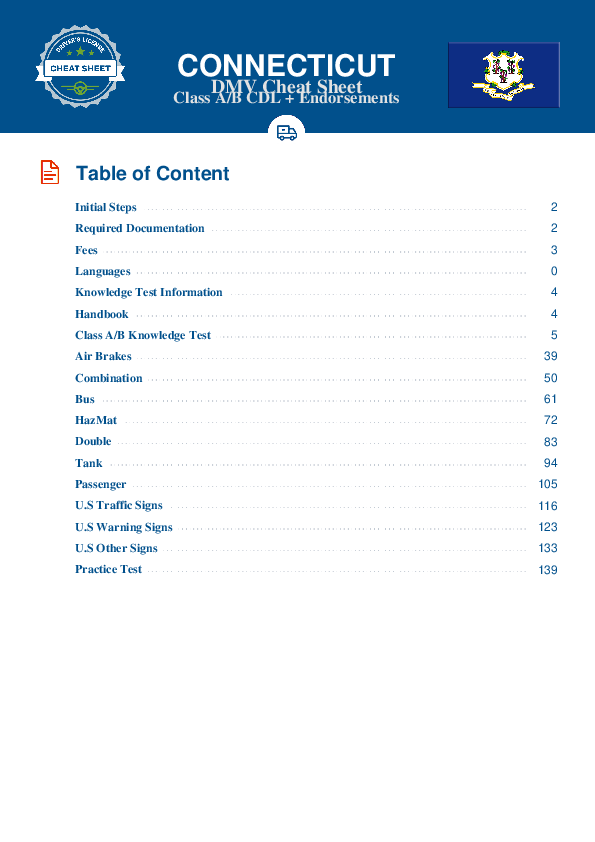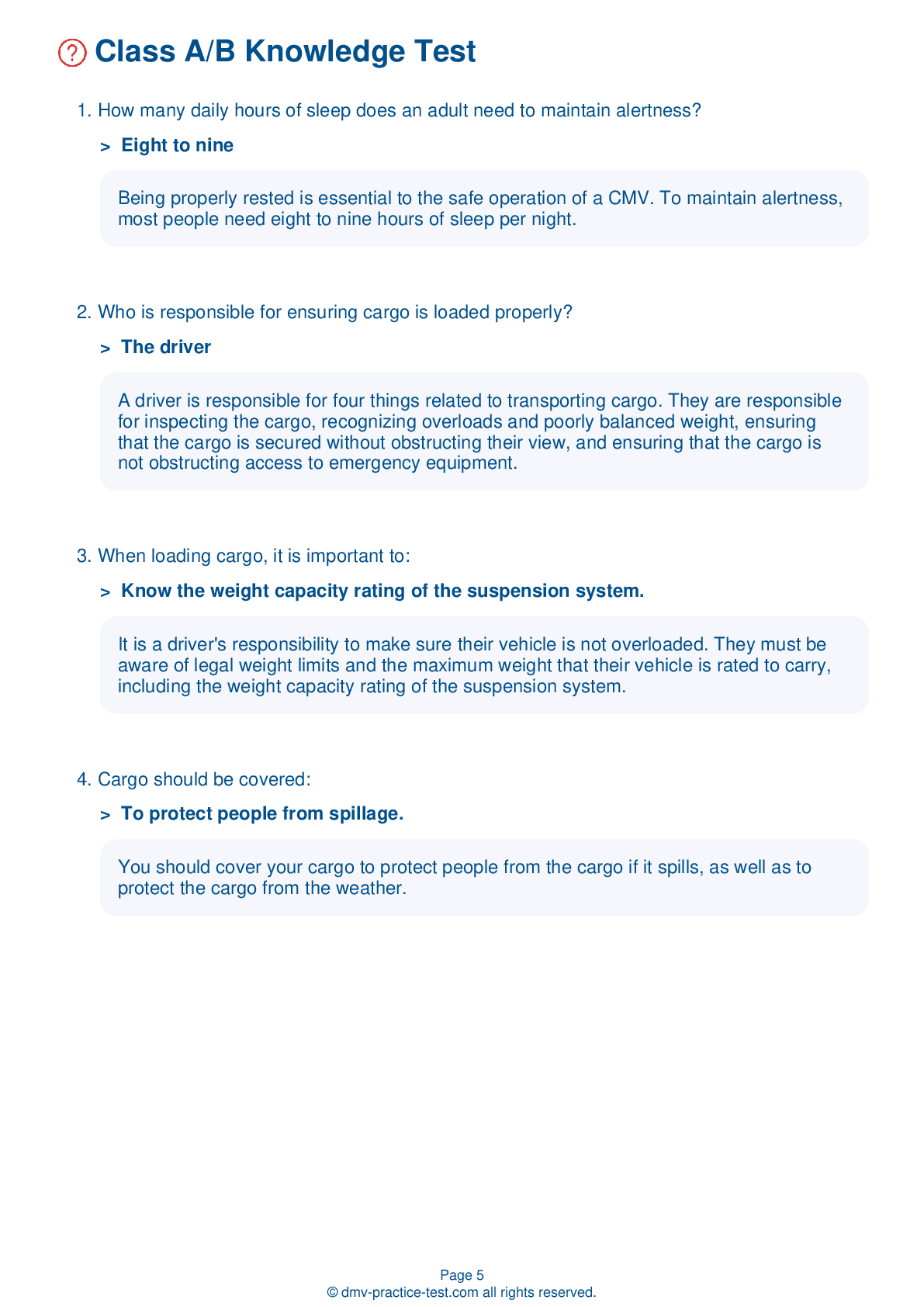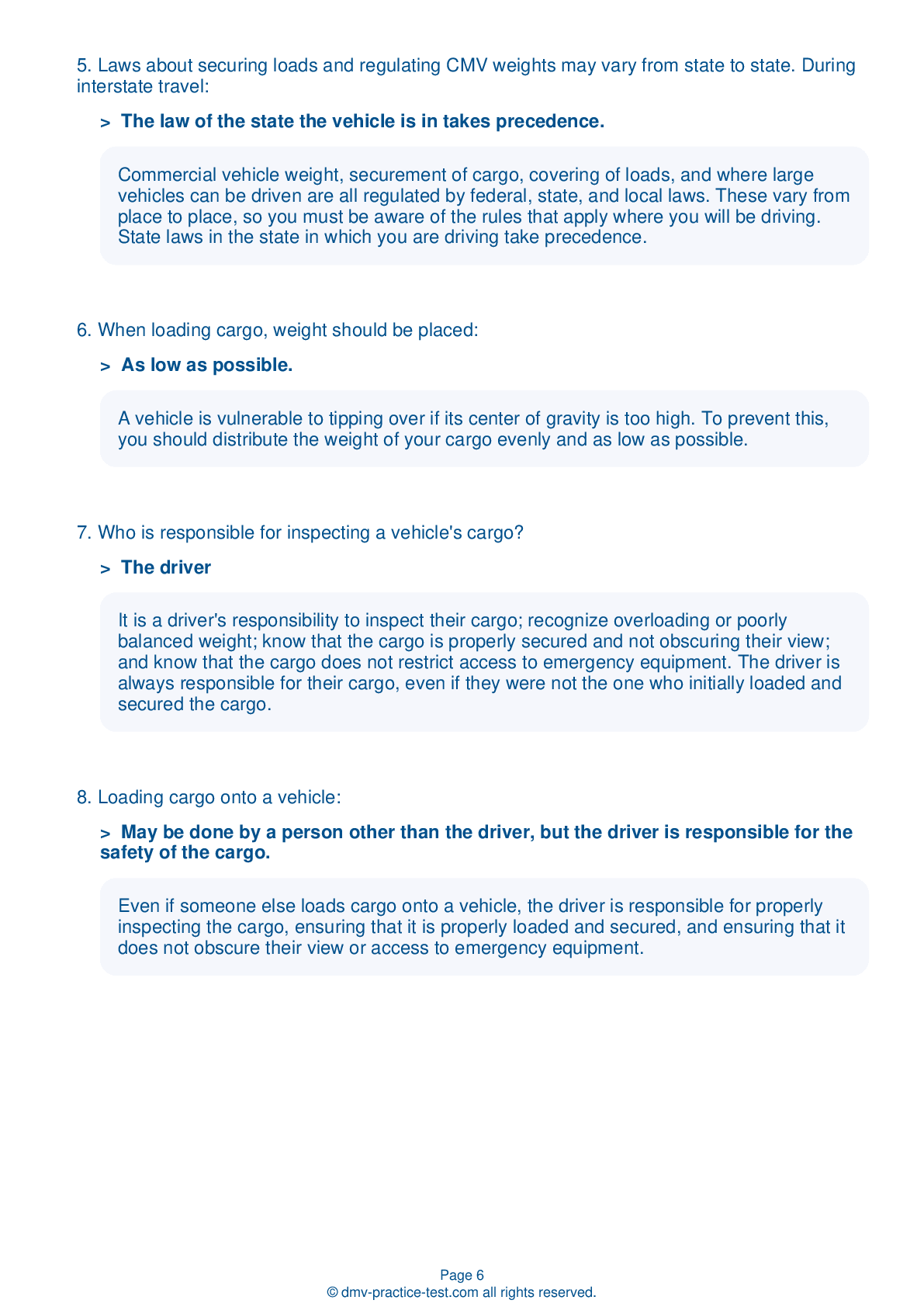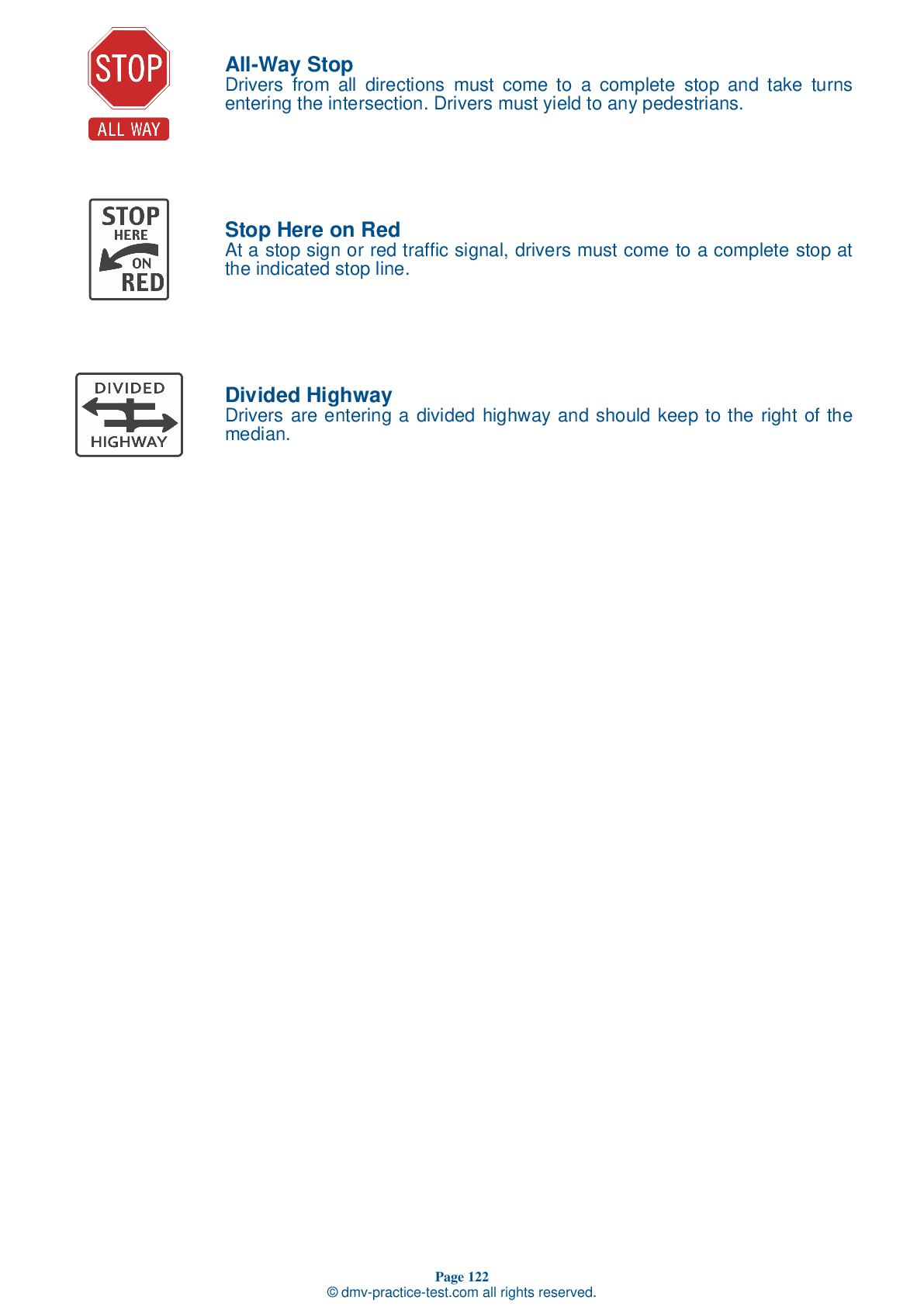Class A Driving Test | Connecticut 2025 #2 Page 2 of 7
Train for FREE online with our Connecticut class A license test. The official exam test consists of several obligatory parts, with all of them checking your knowledge of different blocks of road rules. If you need to obtain a CT CDL class A permit in 2025, practice as much as possible. Free sample tests published on our website will help you check and improve your knowledge and boost your grades. Please bear in mind that CDL class A requirements may vary from state to state.
8 . What is road rage?
Aggressive driving is defined as operating a motor vehicle in a selfish, bold, or pushy manner. Road rage is defined as operating a motor vehicle with the intent of doing harm to others, or the intent of physically assaulting another driver or their vehicle.
9 . Which of the following is not a reason to use your mirrors?
While regular mirror checks should be part of your normal driving routine, checking your mirrors is especially important when turning, changing lanes, merging, and performing tight maneuvers.
10 . Hydroplaning occurs when:
Hydroplaning is an effect that occurs on wet roads when tires lose traction with the road surface and begin gliding along on a layer of water.
11 . When parking, you should not use the parking brake if:
If your brakes are hot after coming down a steep grade, you should not use your parking brake when parking. Let your brakes cool before applying the parking brake or risk damaging the brakes.
12 . The two indicators that determine when you should upshift are:
There are two indicators that determine when you need to shift into a higher gear. One indicator is the engine speed (rpm). You should read your vehicle's manual to learn its rpm range and shift up when you reach the top of that range. The other indicator is road speed (mph). You should learn which speeds each gear can accommodate, then keep an eye on the speedometer and shift up as needed.
13 . Emergency brakes are:
All trucks, truck tractors, and buses must be equipped with emergency brakes and parking brakes.
14 . When backing a truck, you should:
When backing a truck, always use the mirrors on both sides of the vehicle. Have someone help you whenever possible.
See the exact questions that will be on the 2025 Connecticut DMV exam.
99.2% of people who use the cheat sheet pass the FIRST TIME
Lillian MCcranie explains how our CDL study guide was helpful in passing the exam and recommends it to everyone.
Cameron tells us how he purchased the CDL exam, and found it to be a useful tool which helped him pass the exam and find a job.



